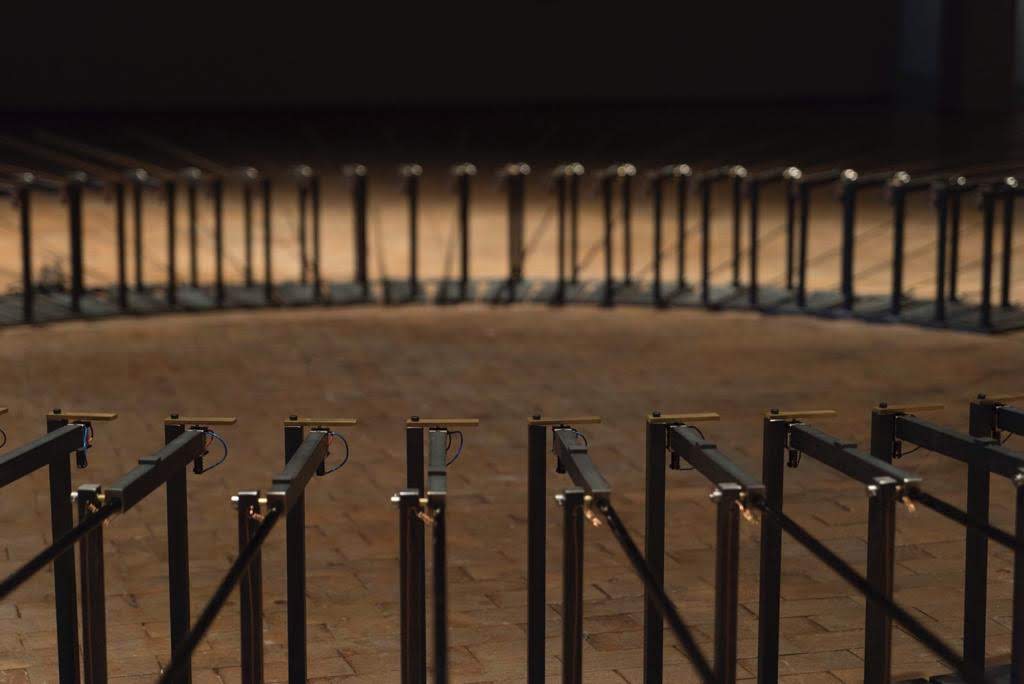Noise Signal Silence
Radio antennas in the courtyard of the exhibition venue listen to the vastness of space. The received electromagnetic waves control the installation in the exhibition room. Inspired by spectroscopy, the artwork breaks the astronomical radio beams down into their individual frequencies. This spectrum is distributed to the individual arms of the installation. The intensity of the measured radio waves determine the strength of the amplitude and so the movement and sound. A simple mechanism, based on the properties of a solenoid, is used to strike a small resonating brass plate. By multiplication a small armada of finely balanced, long, narrow arms emerges, rocking gently up an down. The vibrations of space performed as cosmic choreography, as a murmuring,chirring and clacking symphony.
The black 2.4mt dish complies with the guidelines for amateur investigation by SETI (Search for Extraterrestrial Intelligence). Since 1960, this term describes various methods of searching for signs of other civilizations in space. The telescope examines the area around the hydrogen line (1420 MHz), a preferred frequency for any radio astronomy and especially for finding intelligent life on alien planets.
On the roof of the exhibition venue is a Yagi antenna. It uses a French military radar system called GRAVES, which sends radio waves from the ground into space at the frequency of 143,050 MHz. These are reflected back to earth by high atmospheric layers. This system detects all objects that enter the earth’s atmosphere at an early stage. This can be meteorites, parts of reentering satellites or anything else.
The data from both radio antennas are read simultaneously in real time and transferred to the installation.
Size variable.
Mixed Media.
Thanks to Florian Huhoff, Sebastian Müllauer and Anna Diljá Sigurðardóttir.
Commissioned by Bauhaus 100 Das Eröffnungsfestival.






